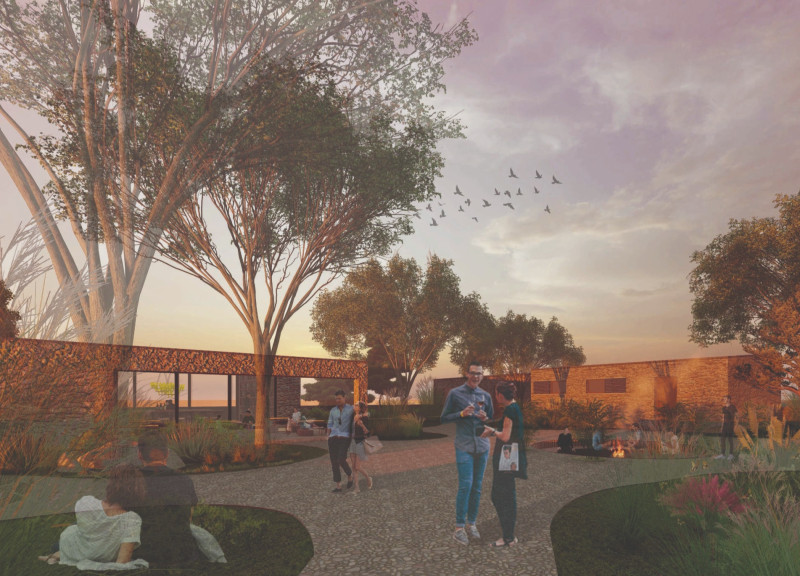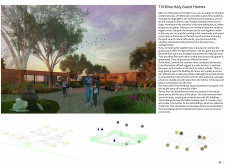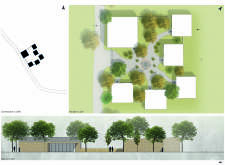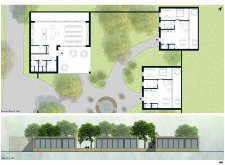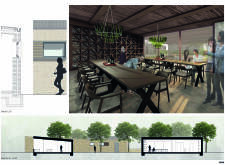5 key facts about this project
A key element of the project is its integration with the surrounding landscape. The site layout fosters a strong connection to nature, with large glass openings in each guest house that offer views of the vineyard. The communal courtyard serves as a focal point, facilitating social activities and outdoor gatherings. This spatial organization reflects the project’s dedication to providing a communal yet private experience.
Design Unique to the Vineyard Context
What sets the Tili Wine project apart from typical hospitality architectures is its deliberate incorporation of reclaimed materials and a commitment to sustainability. Natural stone and timber are predominant in the design, chosen not only for their aesthetic appeal but also for their environmental compatibility. The use of local materials reduces the carbon footprint and enhances the integration of the structure within the vineyard landscape.
The project’s architectural language combines modern design sensibilities with traditional Italian building techniques. The guest houses are characterized by simple geometric forms, complemented by warm wooden accents and stone facades. This fusion creates a contemporary yet timeless character, distinct from conventional hotel designs. The thoughtful use of outdoor spaces, including private terraces for each accommodation, promotes engagement with the natural surroundings.
Spatial Organization and Functionality
The guest houses are strategically positioned to define public and private spheres, with the central courtyard facilitating interaction among guests. The organizational layout provides a seamless flow, where visitors can traverse easily between individual accommodations and communal areas. Each guest house is thoughtfully designed to offer comfortable living spaces, complete with private amenities that cater to the needs of visitors while preserving a sense of tranquility.
Architectural principles underscore the project's design process, focusing on creating harmony with the environment and fostering community interaction without compromising individual privacy. This carefully considered approach makes the Tili Wine project a model of modern hospitality architecture in vineyard settings.
Explore the project presentation for more details on architectural plans, architectural sections, and architectural designs. Engaging with these elements will enhance your understanding of the architectural ideas that shape the Tili Wine guest homes project.


